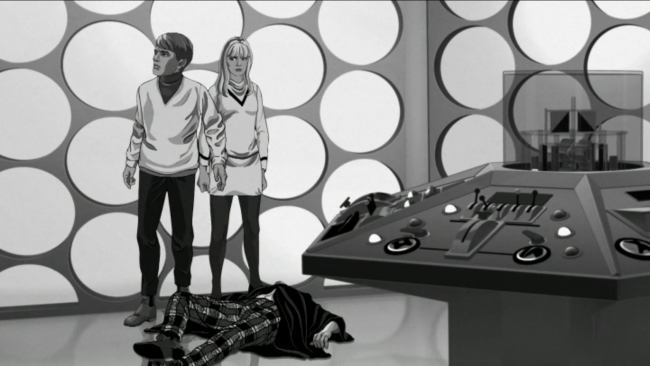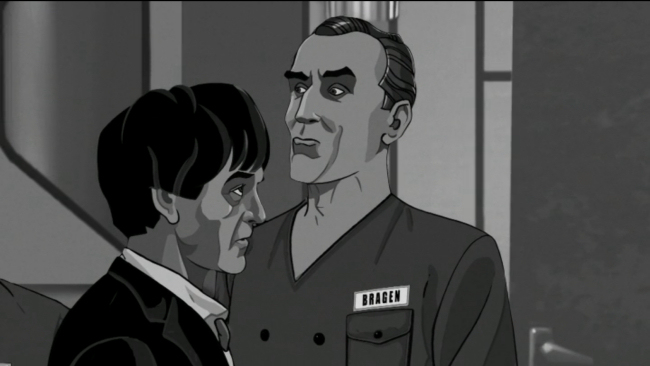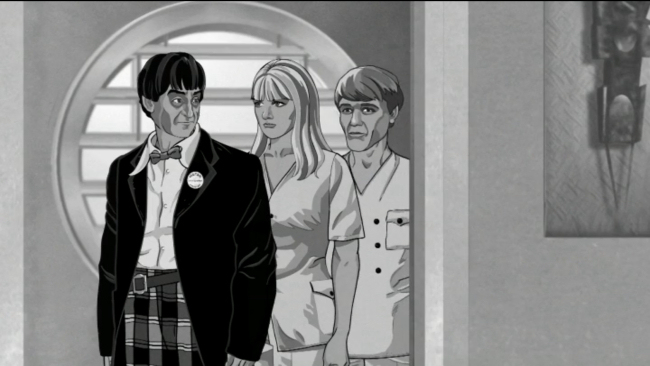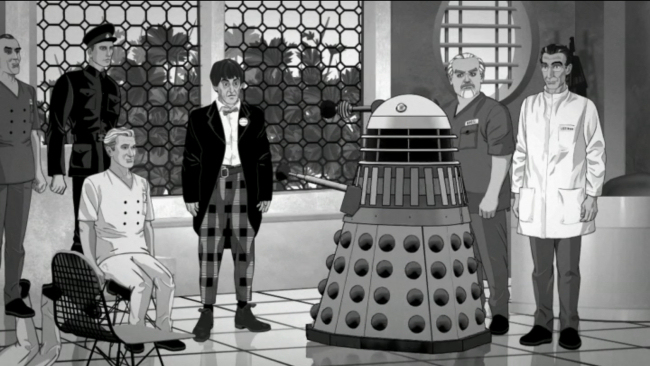
This week I finally got around to watching the 2016 animated version of 1966's Power of the Daleks, the first serial of the Second Doctor's tenure on Doctor Who. The original live action episodes from the serial, with the exception of a few clips and stills, are lost due to the BBC's ill-advised junking policy. Audio of all six episodes survived, though, so this was used to create an animated version. I found the result a mixed bag, mostly I prefer the old releases consisting of stills, clips, and title cards combined with the surviving audio of lost episodes. Your mileage may vary, depending on how comfortable you are with this particular form of animation, but I found the combination had a persistently distracting disharmony.

Mind you, I realise this was probably the best that could be afforded. Traditional hand drawn animation or fully 3d computer animation might have been better but even then I don't think it would have quite added up properly. So much of Patrick Troughton's performance is in his face and body, any animated version will inevitably be the work of other creative impulses and limitations. The old Star Trek animated series from the 70s wasn't quite as jarring, partly because the actors were recording specifically for animation, but animated Kirk and Spock were always of a different species than their live action counterparts. The 2D computer animation for Power of the Daleks also might suffer from my familiarity with its association with parody.

Maybe it's just me, but on shows like Space Ghost Coast to Coast, Sealab 2021, and Harvey Birdman, it seemed like part of the joke. It created a sense of deliberate unreality, post-modern and a bit punk, reliant on the consistent impression that these images are being pushed outside their originally intended parameters. Space Ghost bantering nonsense with Zorak, the petty insecurities that come through in their dialogue and delivery undermining the simplistic hero and villain figures paralleled by computers stretching the drawings past their intended range. It was ridiculous, oddly imposing the external reality on the animation, and therefore funny.

So it feels out of step with the experience we're supposed to be having with Power of the Daleks. I love the idea that the Second Doctor's first moments are both frightening and funny, and Troughton is a big part of that in the surviving clips. The animation sanitises it, removes the sense of anxiety at the strange and uncomfortable.

Sometimes the animation carries its own sense of eeriness, typically divorced from any eeriness intended in the story. I felt sometimes like I was watching demon puppets who'd become trapped in a recording, especially in long pauses where they stand there blinking, shifting their eyes around, as though slightly panicked they're temporarily unconstrained by any dialogue from the audio, frightened by the sudden imposition of freedom.

The Daleks come off a little better, being fully 3D animation. Their familiar peevish monotone dialogue fits well with the animation and the sequence where a horde of new Dalek shells are manufactured is the most effective part of the animated serial. All in all, though, I prefer the audio accompanied by stills and clips.

No comments:
Post a Comment